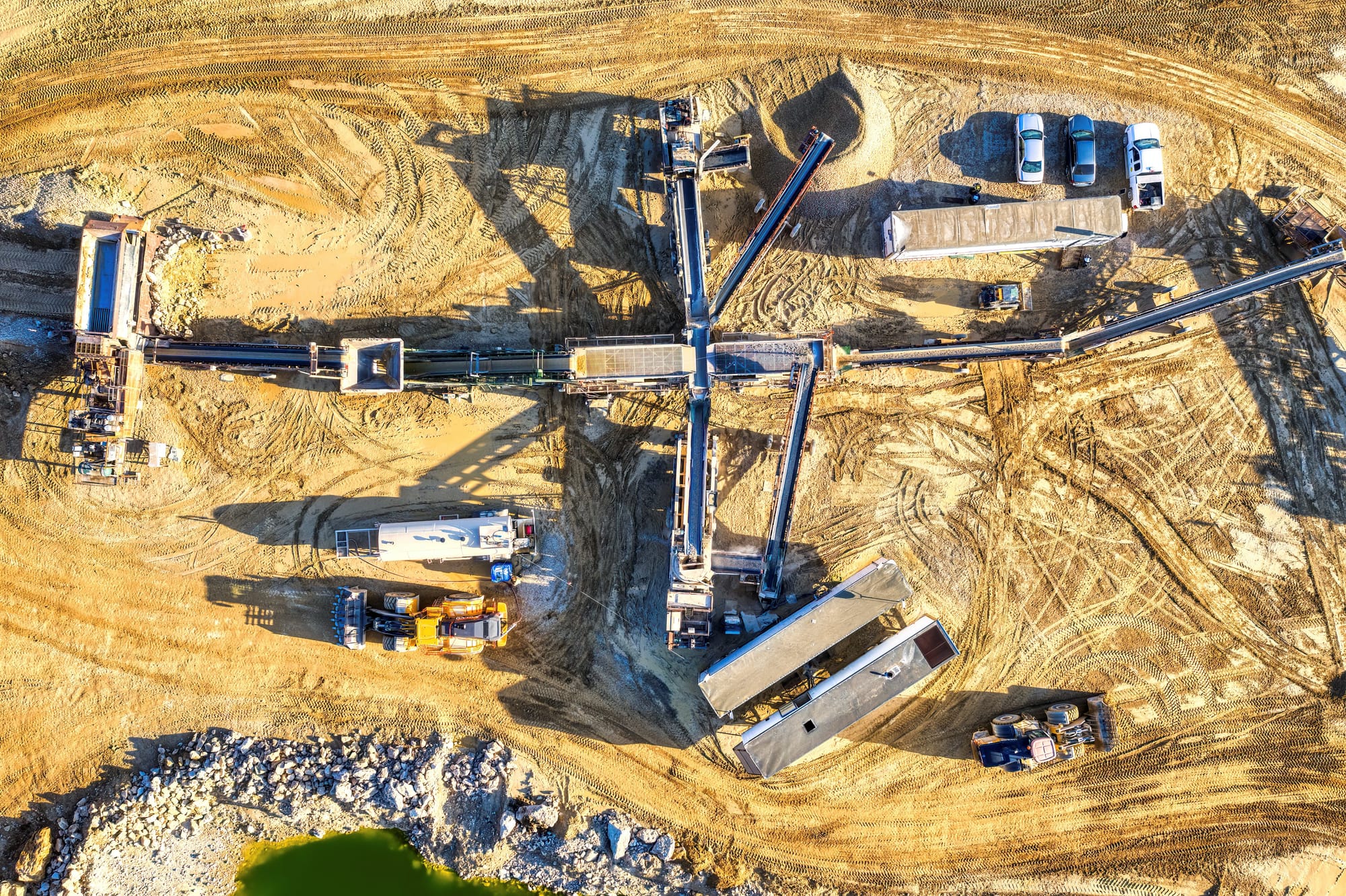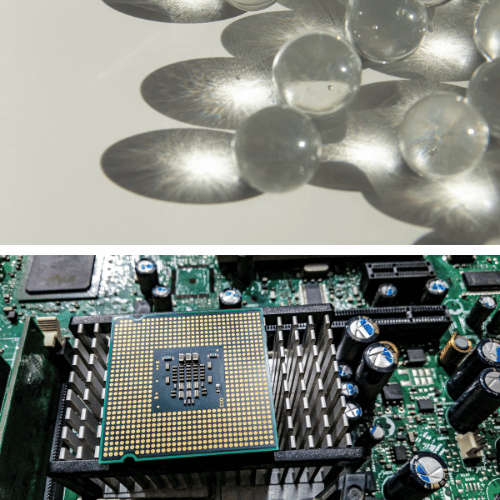Silica, commonly known as silicon dioxide, is more than just a mineral; it's a cornerstone of our well-being. Integral to the strength of connective tissues and pivotal in the realms of skin radiance, bone robustness, and overall bodily function, silica's role cannot be overstated. Its involvement in collagen production and bone formation is just the tip of its health benefits. But what is the best source of this essential mineral? This question is not just for the health-conscious but anyone seeking to elevate their wellness. In this comprehensive guide, we delve into the natural reservoirs and supplemental forms of silica, shedding light on the most effective ways to harness its power. We'll explore its multifaceted health benefits, from enhancing bone density to nurturing healthy hair, skin, and nails, and guide you through the importance of silica intake. Our aim is not just to inform but to transform your understanding of this vital mineral and how to incorporate it into your diet safely for maximum benefit.
Key Takeaways:
- Uncover the top natural and supplemental sources of silica for enhanced health.
- Delve into the myriad health benefits of silica, including its crucial role in supporting bone density and maintaining healthy hair, skin, and nails.
- Grasp the significance of silica in your diet and learn the best ways to include it safely and effectively.
Harnessing Silica's Power for Bone and Collagen Health
Silica's Crucial Role in the Human Body
Silica, or silicon dioxide, is more than just an abundant trace element in the earth's crust; it's a vital contributor to human health. As the second most abundant element after oxygen, silica's importance in the human body is profound. It's essential for forming collagen—the fundamental building block of our skin, bones, and connective tissues. This natural silica plays a pivotal role in maintaining bone health and skin elasticity. A silica deficiency can have noticeable effects, such as brittle nails, delayed bone growth, and reduced skin firmness, highlighting its importance in our diet and overall health.
Dietary Sources and Supplements: Ensuring Adequate Silica Intake
To maintain this crucial balance, one can turn to natural sources of dietary silicon. Foods like green beans, brown rice, and oat bran are nutritious and rich in easily absorbable silica. These food products contribute significantly to bone mineral density and the health of connective tissues. However, for those who might find it challenging to get enough silica from their diet alone, silica supplements, like choline-stabilized orthosilicic acid, offer a convenient alternative. These supplements come in various forms, including tablets, capsules, and liquid forms, enabling everyone to enhance their silica intake for healthier hair, skin, and nails.
Exploring the Wide-Ranging Health Benefits of Silica
Silica in Bone and Cardiovascular Health
Silica's role extends beyond just strengthening bones; it actively stimulates bone formation and trabecular bone health. Studies have linked increased dietary silicon intake to higher bone density, crucial in preventing conditions such as osteoporosis. Emerging research also suggests a potential positive impact of silica on cardiovascular health. While further studies are needed, the evidence points toward silica's role in reducing the risk of cardiovascular diseases, marking it as a key element in the pursuit of overall health and wellness.
The Beauty Benefits of Silica and Safety Considerations
Beyond its internal benefits, silica is renowned for its beauty-enhancing properties. It boosts collagen production, which is vital for healthy, elastic skin, strong hair, and resilient nails. However, it's essential to differentiate between the beneficial natural form of silica and its crystalline form. Crystalline silica, especially when inhaled, can pose serious health risks, leading to conditions like chronic obstructive pulmonary disease and lung cancer. Understanding the sources and forms of silica is crucial for safe use and to maximize its health benefits.
Silica in the Food Industry: Beyond Nutrition

The Ubiquity and Utility of Silica in Earth's Crust
Silica, one of the most prevalent minerals in the Earth's crust, is not just a dietary element but plays a crucial role across various industries. Its journey from the crust to our daily use illustrates its importance in technology, agriculture, and construction. In addition to being a fundamental component in the manufacturing of glass, ceramics, and electronics, silica's presence in natural forms like sand and quartz is vital for construction materials. Silica's geological journey and its utility beyond health benefits underscores its versatility and impact on human civilization.
Silica's Role in Agriculture and Food Production
Silica, sourced from the earth's crust, plays a crucial role in agriculture, particularly in the health and growth of plants. This mineral is abundant in the soil and essential for strengthening plant cell walls, leading to improved resistance to pests and diseases. By enhancing the structural integrity of plants, silica contributes to increased crop yields and overall agricultural productivity. Farmers who understand the importance of this mineral often incorporate silica-rich amendments into their soil to promote healthier, more robust crops.
Moreover, the presence of silica in the earth's crust means it is readily available for use in various agricultural applications. For instance, certain bioactive silicates are added to fertilizers to improve their efficiency and to ensure that plants receive an adequate supply of this vital nutrient. Using silica in agriculture extends beyond soil health, as it also helps manage environmental stresses such as drought, heavy metals, and salinity, which can adversely affect crop growth. By leveraging the benefits of silica, farmers can cultivate plants that are not only more resilient but also more nutritious.

The Technological and Industrial Utilization of Silica
Silica, extracted from the earth's crust, is crucial for our health and plays a pivotal role in various industries. The electronics industry, for example, relies heavily on high-purity silicon derived from silica to produce semiconductors and computer chips. This transformation from a simple mineral to a complex technological component is a testament to silica's versatility and the innovative ways humans have harnessed resources from the earth's crust. The journey of silica from a raw mineral to a core element of technology is a remarkable example of human ingenuity.
In the construction industry, silica in the earth's crust makes a wide range of products, from glass to cement. The unique properties of silica, such as its hardness and resistance to weathering, make it an ideal material for building durable structures. When we look through a window or walk on a concrete sidewalk, we interact with silica, transformed from its natural state in the earth's crust into a functional material that shapes our built environment. This underscores this mineral's profound impact on our daily lives, far beyond its dietary benefits.
Adding to the versatility of silica, diatomaceous earth presents another fascinating application. This sedimentary rock, rich in silica, is composed of the fossilized remains of diatoms, a type of algae. While primarily used for industrial purposes, food-grade diatomaceous earth is sometimes consumed as a source of silica, highlighting its diverse uses.
Furthermore, silica gel, a desiccant form of silica, is commonly used to control humidity. While not intended for human consumption, its application in protecting goods from moisture damage is yet another example of the diverse and practical applications of silica in various industries. Silica gel's role in preserving the integrity of products, from electronics to pharmaceuticals, illustrates the mineral's integral presence in our daily lives and industrial processes.
Understanding the Risks: Silica Exposure and Respiratory Conditions
Silica, while beneficial in many aspects, also poses risks when inhaled in its crystalline form. Prolonged exposure to fine silica dust can lead to a serious lung disease known as silicosis. This condition is characterized by inflammation and lung scarring, which can cause severe breathing difficulties. Workers in mining, construction, and sandblasting industries are particularly at risk, as they may encounter silica in higher concentrations.
The prevention of silicosis is a critical health and safety concern. Employers are responsible for implementing protective measures, such as adequate ventilation and respiratory equipment. Meanwhile, individuals should know the potential hazards when working in environments with high silica content. Regular health check-ups and staying informed about the latest safety protocols can help mitigate the risks associated with silica exposure.
Silica Supplements and Dietary Importance
When it comes to boosting your silica intake, silicon supplements offer a convenient and effective solution. Available in diverse forms, such as tablets, capsules, and liquid silicic acid, these dietary supplements are specifically designed to support the health of your hair and nails, promote healthy skin, and contribute to bone density. Choosing a high-quality silica supplement is essential to ensure optimal absorption and effectiveness. Look for products that specify their silicon content and boast good bioavailability.
Before incorporating any silicon supplements into your regimen, it’s wise to understand how they interact with your gastrointestinal tract. The urinary silicon excretion rate can be a helpful indicator of how well your body absorbs the supplement. It’s also crucial to consider any potential interactions with other medications or supplements you’re currently taking. Consulting with a healthcare professional can provide guidance, helping you navigate the choices and find a supplement that aligns with your specific health goals and needs.
In our efforts to guide you further in selecting the right supplement, we invite you to read our article titled “Shining the Spotlight on the Best Silica Supplement: Your Key to Stronger Bones and Radiant Skin.” This detailed review covers five of the top silica supplements available today, offering insights and information to help you make an informed decision. Read the article here to discover which supplement might best fit your health objectives.👇
Understanding Silica Absorption: From Digestive Dynamics to Supplemental Efficiency
The process of silica absorption in the human body is influenced by various factors, with the chemical form of silica and the efficiency of the digestive system playing pivotal roles. Silica, known chemically as silicon dioxide, is absorbed differently depending on its state. Soluble monomeric species of silica, often found in water and certain beverages, typically have a higher intestinal absorption rate. This form of silica is more readily processed by the gastrointestinal tract, leading to enhanced bioavailability.
Comparatively, the absorption of silica from solid food sources, such as green beans, brown rice, oat bran, and other food products naturally rich in dietary silicon, can be less efficient. This is due to the complex matrices in which silica exists in these foods, which may affect its digestive absorption. Despite this, these natural sources are crucial in providing the body with the necessary silicon content, contributing to overall health, bone formation, and maintaining healthy skin, hair, and nails.
In addition to these sources, the horsetail herb stands out as a potent natural source of silica. Revered for centuries in traditional medicine, horsetail is now widely used in various nutritional supplements, offering a beneficial natural form of silica for human consumption. These supplements, including supplemental colloidal silica and choline-stabilized orthosilicic acid, are formulated to optimize absorption. Available in tablets, capsules, and liquid forms, they are engineered to enhance the bioavailability of silica, thereby maximizing its health benefits. They are particularly beneficial for individuals who might not get sufficient silica from their diet, aiding in maintaining bone density and collagen production.
The urinary silicon excretion rate can serve as an indicator of silica absorption effectiveness. Monitoring this rate can provide insights into how well the body utilizes the ingested silica, whether from natural food sources or supplements. It's important to note that while silica supplements can be beneficial, consulting with a healthcare professional before starting any new supplementation is advisable. This ensures that the supplement chosen suits your specific health needs and does not interfere with other medications or dietary restrictions.
The Future of Silica Research: What Lies Ahead
The journey of silica research is ever-evolving, with promising avenues emerging across various fields. As we unravel silica's extensive health benefits, its role in the health and food industries is poised for significant expansion. The potential of silica to contribute to overall health and well-being is not only vast but also multifaceted, encompassing areas from nutrition to disease prevention.
Advancements in Health and Medicine
In health and medicine, ongoing research is delving into the deeper mechanisms by which silica contributes to bone health, collagen production, and the maintenance of healthy skin, hair, and nails. Future studies may reveal more about silica's potential in preventing and managing osteoporosis, arthritis, and other age-related conditions. Additionally, the role of silica in cardiovascular health and its potential to mitigate risks associated with heart diseases is a promising area of investigation.
Emerging research also explores the therapeutic applications of silica nanoparticles in drug delivery systems. The unique properties of these nanoparticles could revolutionize how medications are transported and released within the body, potentially leading to more effective treatments for various ailments.
Innovations in Food Science and Nutrition
In the food industry, the focus on silica is likely to extend beyond its current uses as an additive and supplement. Innovative research might explore new ways to enhance the bioavailability of silica in food products, making it easier for the body to absorb and utilize this essential mineral. Developing functional foods enriched with silica could play a vital role in addressing nutritional deficiencies and promoting general well-being.
Furthermore, exploring sustainable and eco-friendly silica extraction and processing methods is expected to gain momentum. This could lead to more environmentally responsible practices in the food industry, aligning with global efforts to reduce carbon footprints and promote sustainable agriculture.
Technological and Industrial Frontiers
Beyond health and nutrition, the potential of silica in technological applications remains a fertile ground for research. Advancements in the use of silica in renewable energy sources, particularly in the optimization of solar panels, are anticipated. The exploration of silica's properties could lead to more efficient energy capture and storage solutions, contributing to the global shift towards renewable energy.
Additionally, the role of silica in advanced materials science is an exciting prospect. Its application in creating stronger, more durable, and possibly smarter materials could have far-reaching impacts on construction, manufacturing, and even aerospace industries.
Wrapping Up This Discusion on Silica Research
As we look to the future, the scope of silica research extends far beyond its current applications. Its multifunctionality as a health supplement, a food additive, and an industrial component only scratches the surface of its potential. The ongoing exploration of silica's properties and benefits promises to enhance our understanding of this versatile mineral and usher in a new era of health, technological, and environmental advancements.
A Comprehensive Summary On Silica: A Cornerstone of Health and Industry
Silica, a multifaceted mineral, plays a vital role in various aspects of health and industry. As a cornerstone of bone formation and collagen production, it significantly contributes to overall well-being. The best dietary sources of silica include natural foods such as green beans, brown rice, and oat bran. These foods provide the body with essential silica in an easily absorbable form, supporting strong bones, healthy skin, and robust nail health.
In addition to natural sources, silica supplements like choline-stabilized orthosilicic acid offer a convenient way to boost silica intake, particularly for those whose diets may lack sufficient amounts. While the inhalation of crystalline silica poses serious health risks, dietary silica is safe and offers numerous health benefits.
Beyond its role in health, silica's industrial and technological applications are vast and varied. From its use in the food industry as an anti-caking agent to its critical role in the electronics sector for producing semiconductors and computer chips, silica's versatility is unparalleled. Its presence in construction materials like glass and cement further demonstrates its importance in our daily lives.
The potential future of silica research is exciting, with ongoing studies exploring its broader health benefits, innovative uses in food science, and technological advancements. The exploration of silica's properties could lead to breakthroughs in renewable energy, advanced materials, and sustainable practices.
Our article “Is Silica as Important as Calcium for Bone and Cartilage Health?” provides an insightful analysis for those interested in a deeper comparison of silica's role in bone health alongside other key minerals. This comparison sheds light on the essential nature of silica in maintaining bone and joint health, standing toe-to-toe with well-known minerals like calcium. Read more about this comparison and its implications for dietary choices here. 👇
In conclusion, silica's contribution to our health and its myriad industrial applications make it an invaluable element in both our diets and the broader global economy. Understanding its sources, benefits, and applications is key to leveraging its potential for improved health and technological progress.
Thanks for taking this journey to explore Silica's many sources and uses for both health and industry. And, if you want to add to your library of knowledge, you should check out the other articles mentioned and linked above. It never hurts to add to your arsenal!
Also, please return soon to check out our next review of another incredible supplement – we’re always looking out for YOU!
*We are not qualified medical advisors. The content here is only based on our personal opinions and should NOT be used as a substitute for a healthcare professional's advice!











Member discussion